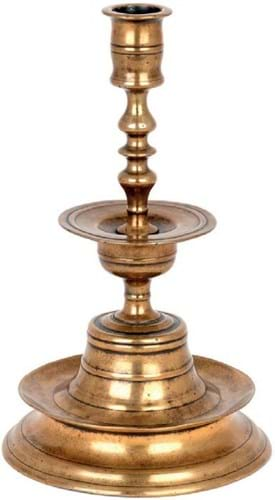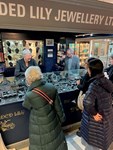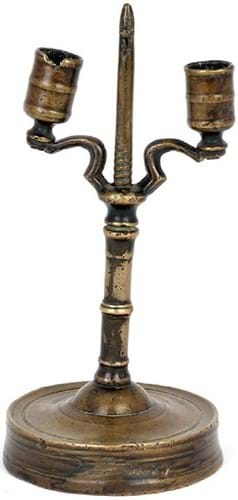
A rare 15th century Three Kings form candlestick, one of only two known English detachable double socket arm examples, $9000 (£7500) at Pook & Pook.
Bud Lear was fascinated by the idea that much of human history was spent in darkness illuminated by a single flame, when a candlestick was for many a luxury item carried from room to room.
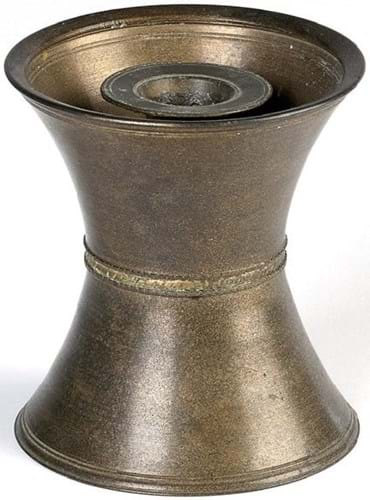
The earliest candlestick in the Bud Lear ensemble was this 4in (10cm) hourglass-shaped turned bronze Roman provincial example dating from the 2nd or 3rd century AD. It realised $1500 (£1250) at Pook & Pook.
In 1985 he met the metalwork specialist and dealer Christopher Bangs which led to both a friendship and a collaboration – assembling a collection that traced the development and forms of socket candlesticks across Europe.
The result was published as The Lear Collection: A Study of Copper-Alloy Socket Candlesticks AD200-1700, a detailed investigative survey on early lighting written by Bangs, who died last year.
In 1998 Christie’s held a sale of pieces from the Lear Collection in London.
Candlesticks through history
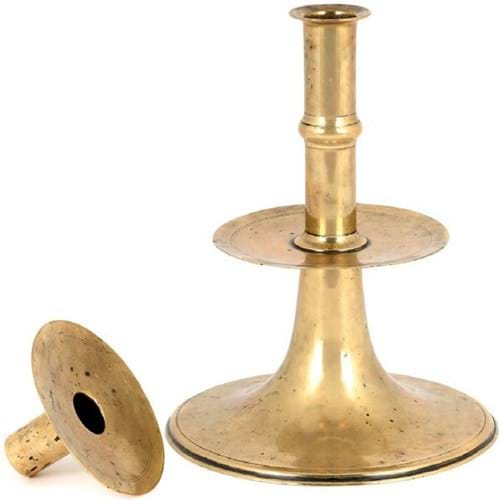
This large mid-17th century trumpet-shaped candlestick, shown with its detachable bobeche, $17,000 (£14,165) at Pook & Pook.
Pook & Pook’s (26% buyer’s premium) January 20 auction in Pennsylvania featured 55 Lear lots dating back as far as the Roman era.
A few of these were items that did not sell in that Christie’s auction but Lear also included fresh material from his collection.
Most were made of brass as an alloy of zinc and copper plus elements that existed in local materials and, as well as more representative standard examples, there were a number of rare and unusual forms.
Virtually all found buyers although a couple of potential highlights including a rare candlestick cast as Martin Luther failed to get away.
Among the rarities were several English forms dating from the 15th century. An 8¼in (21cm) high example of Three Kings form, one of only two known English examples with a detachable double socket arm realised $9000 (£7500).
Another slightly larger Three Kings form specimen featuring two castellated hexagonal faceted sockets on Gothic pierced arms realised $7000 (£5835). It was acquired in England and elements of its form and alloy lean toward an English attribution but it is classified as from north-west Europe because it features a shallow lipped integral drip base and a conical skirt.
The highest-priced candlestick at $20,000 (£16,665) was a 13in (33cm) high example of Chalice and Paten form set on a flared step base, dated to the mid 16th century and of English manufacture.
Another of the top-priced lots was a particularly large 12½in (32cm) high English brass trumpet-shaped stick on a turned shaft dated to the mid 17th century with the very unusual feature of a detachable bobeche.
Probably used as a hand-held pan light, it sold for $17,000 (£14,165).
Single-owner collections
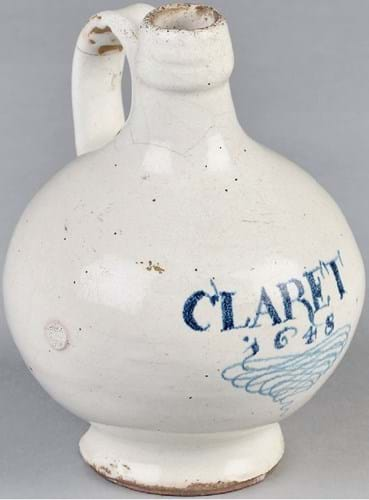
Day one of Pook & Pook’s auction was given over to the collection of Margaret Berwind Schiffer. As well as a wealth of American, Pennsylvania, furniture and objects, it included early English needlework and a large group of early English and Dutch delftwares. Among the delftware were three English white glazed, dated and inscribed delft bottles from the mid-17th century each standing between 6 and 6¾in (15-17cm) in height. The most expensive, shown here, inscribed CLARET and dated 1648, realised $11,000 (£9165), one of the highest delft prices in the sale. The SACK bottle dated 1649 sold for $9500 (£7915) and the WHIT bottle dated 1643 made $3600 (£3000).
The sale was part of a January 18-20 series running to over 1000 lots.
It offered a selection of items of both US and European interest.
The first day was entirely given over to the collection of Margaret Berwind Schiffer, a scholar, collector and author with wide-ranging interests.
The selection offered over the next two days featured a number of single-owner consignments including the Lear candlesticks; American pewter from the Collection of Drs Donald and Patricia Herr; items from the Collection of the Packwood House Museum of Lewisburg, Pennsylvania; and furniture, paintings and silver from Normandy Farms, The Strassburger Estate.
Lavery on the beach
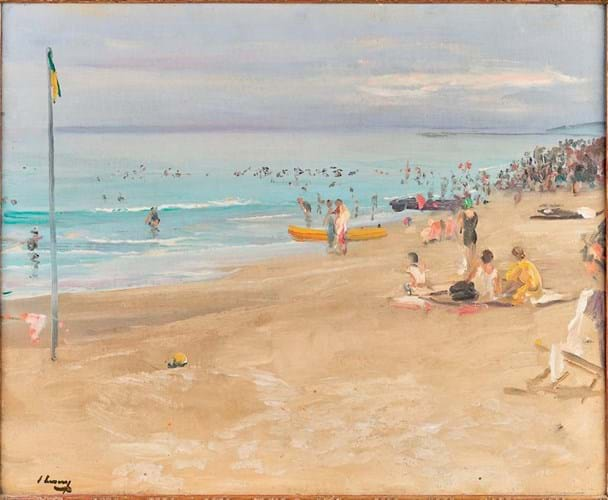
The Beach Deauville – Morning, an Impressionistic scene by Sir John Lavery, was the most expensive lot in the three days of auctions held by Pook & Pook. The 20 x 23¾in (51 x 60cm) oil on board, was signed lower left, titled on the verso and dated 1926. It sold for $290,000 (£241,665).
The Normandy Farms source provided the highest price.
Sir John Lavery’s (1856-1941) oil on board The Beach Deauville – Morning, an Impressionistic scene from 1926 sold for $290,000 (£241,665), well over the $60,000-90,000 guide.
£1 = $1.20


